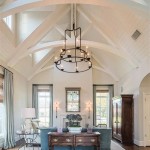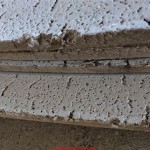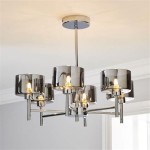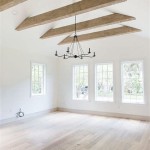Which False Ceiling Is Better: POP or Gypsum Board?
False ceilings, also known as dropped ceilings, are secondary ceilings suspended below the main structural ceiling. They serve both functional and aesthetic purposes, enhancing the interior design of a space while concealing wiring, ductwork, and plumbing. Two of the most common materials used for false ceilings are Plaster of Paris (POP) and gypsum board. Deciding which material is "better" depends heavily on the specific requirements and priorities of the project, as each offers distinct advantages and disadvantages.
This article will provide a comprehensive comparison of POP and gypsum board false ceilings, exploring their key properties, benefits, drawbacks, installation processes, and cost considerations. The aim is to offer a clear and informative guide that assists in making an informed decision based on individual needs and project specifications.
Aesthetic Versatility and Design Options
One of the primary reasons homeowners and designers opt for false ceilings is their ability to drastically alter the aesthetic appeal of a room. Both POP and gypsum board offer a range of design possibilities, but their approaches differ significantly.
POP, being a malleable material, allows for intricate and customized designs. It can be molded into various shapes, curves, and patterns on-site, offering unlimited freedom in creating unique ceiling features. This makes POP an ideal choice for projects seeking ornate detailing, complex geometric designs, or the replication of classical architectural elements. Its seamless finish, achieved through expert application and blending, contributes to a smooth and visually appealing ceiling surface. However, achieving a flawless finish with POP requires skilled craftsmanship and can be time-consuming.
Gypsum board, on the other hand, comes in pre-fabricated sheets, typically offering a more streamlined and modern aesthetic. While it may not allow for the same level of intricate detailing as POP, gypsum board can be used to create clean lines, geometric shapes, and layered ceiling designs. The sheets are easy to cut and install, allowing for relatively quick assembly. Gypsum board can also be combined with other materials, such as wood or metal, to create interesting visual contrasts. While customization options are somewhat limited compared to POP, gypsum board offers a clean, contemporary look that complements various interior design styles. The joints between gypsum boards are usually concealed with joint compound and tape to create a smooth, paintable surface.
Ultimately, the choice between POP and gypsum board in terms of aesthetics depends on the desired style and the level of customization required. POP is suitable for intricate, ornate designs, while gypsum board is better suited for modern, minimalist aesthetics.
Durability, Maintenance, and Longevity
The durability and maintenance requirements of a false ceiling are crucial factors to consider. The chosen material should be able to withstand normal wear and tear, resist moisture damage, and require minimal maintenance for long-term performance.
POP, while offering design flexibility, is generally considered less durable than gypsum board. It is prone to cracking, especially in areas with high humidity or temperature fluctuations. POP is also susceptible to damage from impact, requiring careful handling during installation and cleaning. Maintenance of POP ceilings involves regular dusting and occasional repairs to address cracks or chips. While POP can be repaired, matching the original texture and finish can be challenging.
Gypsum board, being a pre-fabricated material, offers superior durability and resistance to cracking compared to POP. It is also less susceptible to moisture damage, especially if treated with moisture-resistant coatings. Gypsum board is relatively easy to clean and maintain, requiring only occasional dusting and wiping. In case of damage, gypsum board can be easily repaired or replaced. The flat, smooth surface of gypsum board is also less likely to collect dust compared to the intricate designs often found in POP ceilings.
Regarding longevity, both POP and gypsum board can last for many years with proper installation and maintenance. However, gypsum board is generally considered to have a longer lifespan due to its inherent durability and resistance to damage. Therefore, if durability and low maintenance are key priorities, gypsum board is generally a more suitable choice.
Installation Process and Cost Considerations
The installation process and associated costs are essential factors in determining the overall viability of a false ceiling project. The complexity of installation directly impacts labor costs, while material costs vary depending on the type and quality of the chosen material.
POP installation is a labor-intensive process that requires skilled artisans. The POP material is mixed on-site and applied manually, layer by layer, to create the desired design. This process can be time-consuming and requires expertise in molding, shaping, and finishing the material. The cost of POP material is relatively low, but the high labor costs associated with its intricate installation can make it an expensive option. The on-site mixing of materials can also generate dust and mess, requiring careful protection of the surrounding areas.
Gypsum board installation is a relatively faster and simpler process compared to POP. The pre-fabricated sheets are cut to size and attached to a metal frame suspended from the main ceiling. The joints between the sheets are then filled with joint compound and taped to create a smooth surface. Gypsum board installation requires less specialized skills compared to POP, resulting in lower labor costs. The material cost of gypsum board is generally higher than POP, but the lower labor costs often make it a more cost-effective option overall. The installation process is also cleaner and less disruptive, generating less dust and mess compared to POP installation.
In terms of cost, gypsum board is typically more economical for simpler designs and larger areas, while POP may be cost-effective for smaller areas requiring intricate detailing. However, it is important to obtain quotes from qualified contractors for both options to accurately assess the total cost of the project, including material, labor, and any additional finishing costs.
Additional Factors: Thermal and Acoustic Insulation
Beyond aesthetics, durability, and cost, false ceilings can also contribute to the thermal and acoustic insulation of a space. The choice of material can impact the effectiveness of the ceiling in regulating temperature and reducing noise transmission.
POP offers moderate thermal insulation properties. Its porous structure can help to trap air, providing some resistance to heat transfer. However, POP is not as effective as dedicated insulation materials in reducing energy consumption. In terms of acoustic insulation, POP can help to dampen sound reflections within a room, but it is not a highly effective soundproofing material. For optimal acoustic performance, additional sound-absorbing materials may be required.
Gypsum board offers better thermal insulation compared to POP. Its layered structure and density provide greater resistance to heat transfer. When combined with insulation materials, such as fiberglass or mineral wool, gypsum board ceilings can significantly improve the energy efficiency of a building. Gypsum board also offers better acoustic insulation compared to POP. Its higher density and layered structure help to block sound transmission between floors. Acoustic gypsum boards are also available, which are specifically designed to absorb sound waves and reduce noise levels. For projects requiring enhanced thermal or acoustic performance, gypsum board is generally the preferred choice.
The fire resistance of both materials is also a significant consideration. Both POP and gypsum board are inherently fire-resistant materials. Gypsum board, in particular, contains chemically bound water that is released when exposed to fire, helping to slow down the spread of flames. Fire-rated gypsum boards are available, which offer enhanced fire resistance for critical applications. However, the fire resistance of a false ceiling system also depends on the overall design and installation, including the supporting structure and any additional fireproofing measures.
In conclusion, both POP and gypsum board offer distinct advantages and disadvantages as false ceiling materials. POP provides unparalleled design flexibility and is suitable for intricate, custom designs. Gypsum board, on the other hand, offers superior durability, ease of installation, and better thermal and acoustic insulation. The choice between the two depends on the specific needs and priorities of the project, including aesthetic preferences, budget constraints, and performance requirements. A thorough evaluation of these factors will help in selecting the most appropriate material for creating a functional and aesthetically pleasing false ceiling.

Pop Or Gypsum Which Is A Better Material For False Ceiling Suspended Ceilings Bedfordshire

Pop Vs Gypsum False Ceiling

Gypsum Vs Pop Which False Ceiling Is Best 2024 Material Life Of

Gypsum False Ceiling Vs Pop Designcafe

Gypsum Vs Pop False Ceiling Pros Cons Differences Explained

Gypsum Ceiling Vs Pop Which Is More A Reliable False Material Choice

Pop Vs Gypsum False Ceiling Which Is Better

Gypsum False Ceiling Vs Pop Designcafe

Gypsum False Ceiling Vs Pop Designcafe
8 Types Of False Ceiling For Home
Related Posts








